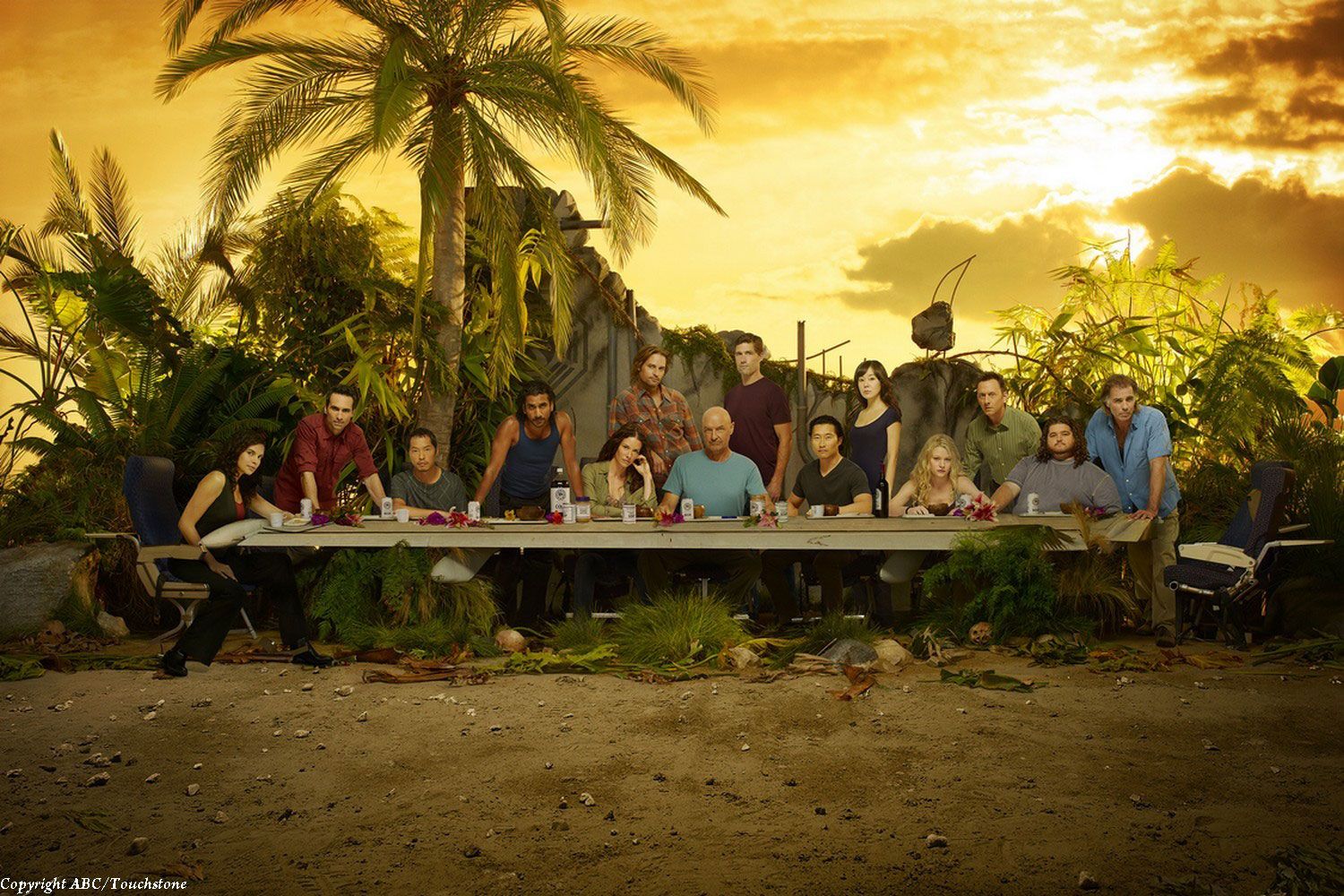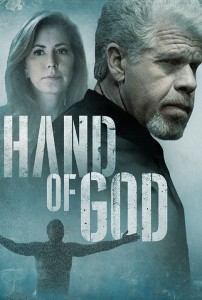Straddling the “Edge”: The Invisible Trend of Religion on TV

One of the most compelling trends in American television programming at the moment is almost never even seen as a trend. A variety of shows in various stages of development or production that feature religious topics and imagery include: Constantine on NBC, Dig on USA, A.D. on NBC, Preacher on AMC, Lucifer for Fox, Black Jesus on Cartoon Network, a Ten Commandments-based series for WGN and another for NBC, American Gods on Starz, Daredevil on Netflix, Hand of God on Amazon… the list goes on and on. Across broadcast, basic and pay cable, and online streaming platforms, there is a wealth of series dealing with spiritual stories, using specific religions’ dogma, featuring Biblical characters and translating religion into mythos.
So why are these elements ignored in trade news and minimized in promotional materials? Have the press and industry failed to recognize this as a trend or are they deliberately downplaying this widespread development across the TV landscape? With religion on fictional television growing, why is it so difficult for press and PR to acknowledge this shift within the industry?
We regularly hear talk of television’s greater edginess—its willingness to engage with more explicit language, sexuality, and violence. Yet when it comes to religion, things get more complicated. Since the neo-network era, “edge” has been a leading logic of the television industry: a way to gain the attention of desirable, affluent, niche audiences who are thought to seek programs distinctive in some way from the mediocre mainstream. Since the 1980s, the concept of “edgy” has found many additional markers for distinction. From NYPD Blue’s notable nudity and curse words to South Park’s free-for-all offensiveness, the taboos of language, representations, violence, and sexuality have faded. Religion, however, remained a vagary. When religion appeared, it was in general, sanitized terms or single-episode sensational stories that nevertheless avoided faith-based specificity.
In 1990, Horace Newcomb described religion represented on television as “the deeply, powerfully embedded notions of the good that must come from . . . somewhere” but that avoided specifics of belief. Little changed from that description of how religion is featured on television until the mid-2000s, when Battlestar Galactica, Lost, and the long-arm of The Passion of the Christ’s success enabled a period of multiple attempts at religiously-themed television shows. At that moment, the press noticed the pattern: For instance, Variety and The Hollywood Reporter both ran articles examining the “hot topic” of religious content for television, putting shows like Wonderfalls, Joan of Arcadia, Miracles, and Revelations in relation to each other and wider industrial vicissitudes. However, aside from a few successful shows with multiple seasons, this mid-decade trend died, and so too did the industry’s willingness to discuss religious content as a programming trend. It’s unclear why the industry that was able to make these links chose to stop explicitly drawing these connections and preferring to ignore the trend, but the big gamble and big loss of Kings seems the turning point toward skittishness.
Significantly, whereas Deadline has no problem identifying new trends pertaining to romantic comedies, movie adaptations, and medical dramas—regardless of how many of these series get greenlit or survive for longer than a handful of episodes—few articles appear regarding the increasingly widespread presence of religious series across the television landscape. If such series are discussed, as in this TV Guide article, Biblical series are foregrounded while most science fiction series are left out. (Whither the Sleepy Hollow mention, TV Guide?)
Religion may be perceived as “edgy,” or at least risky, in a business sense in that it is cast as somewhat dangerous in an industrial context. Many industry workers don’t want to talk about it or deflect to bigger “spiritual/humanist” questions. Even if writers use Revelation in a specifically Protestant iteration as the key to a show’s ongoing mythology, they remain careful to couch it among other mythologies that appear once. But religion on TV is the wrong kind of edgy for how the shows, studios, and networks conceive of their target audience. As young Americans and wealthy Americans (as well as coastal Americans) are identified as more and more secular, spiritual, or non-religious by Pew research and through anecdotal encounters, religion—particularly Christianity, which is the main wellspring for this content—continues to be thought of increasingly as belonging to old, poor, Heartland Americans, (i.e., not the desired consuming audience for many of these shows). Moreover, appealing to such an audience is cast in opposition to “edge.” Thus, the industry straddles a fine “edge”: On the one hand, networks use Biblical adaptations to get the ratings of Heartland viewers, on the other hand, they make the case to advertisers that the “right” kind of audience can be attracted to view their other shows by downplaying the religious elements while maintaining they won’t alienate viewers.
 In this recent spate of shows, the only notable example of a series that is exploiting its religious content to foreground its edgy bona fides is on Amazon. Continuing to cast itself as the place to go for television that could not appear anywhere else, Amazon Studios picked up Hand of God during its August 2014 pilot season. The series wins at edgy bingo: the main plot of the pilot features a corrupt judge who becomes born-again Christian following the brutal beating of his son and the rape of his daughter-in-law by an assailant that he then discovers via “visions” from God. The judge then conscripts a violent disciple to kill in the name of God. The characters curse freely, the violence is graphic, and drug use is commonplace. Yet it is the exploration of corruption in religion that sets this show apart from others in this recent trend. In bucking the industry’s insistence of downplaying religion as a key narrative element, Hand of God found the “edge” in religion. But you wouldn’t know it from trade press coverage of it.
In this recent spate of shows, the only notable example of a series that is exploiting its religious content to foreground its edgy bona fides is on Amazon. Continuing to cast itself as the place to go for television that could not appear anywhere else, Amazon Studios picked up Hand of God during its August 2014 pilot season. The series wins at edgy bingo: the main plot of the pilot features a corrupt judge who becomes born-again Christian following the brutal beating of his son and the rape of his daughter-in-law by an assailant that he then discovers via “visions” from God. The judge then conscripts a violent disciple to kill in the name of God. The characters curse freely, the violence is graphic, and drug use is commonplace. Yet it is the exploration of corruption in religion that sets this show apart from others in this recent trend. In bucking the industry’s insistence of downplaying religion as a key narrative element, Hand of God found the “edge” in religion. But you wouldn’t know it from trade press coverage of it.



Love the image of the edge: an uncomfortable perch, but more safe that being in hot water for categorizing religion as fiction maybe. You make the case that this edge is getting wider and wider, and needs to be recognized as such